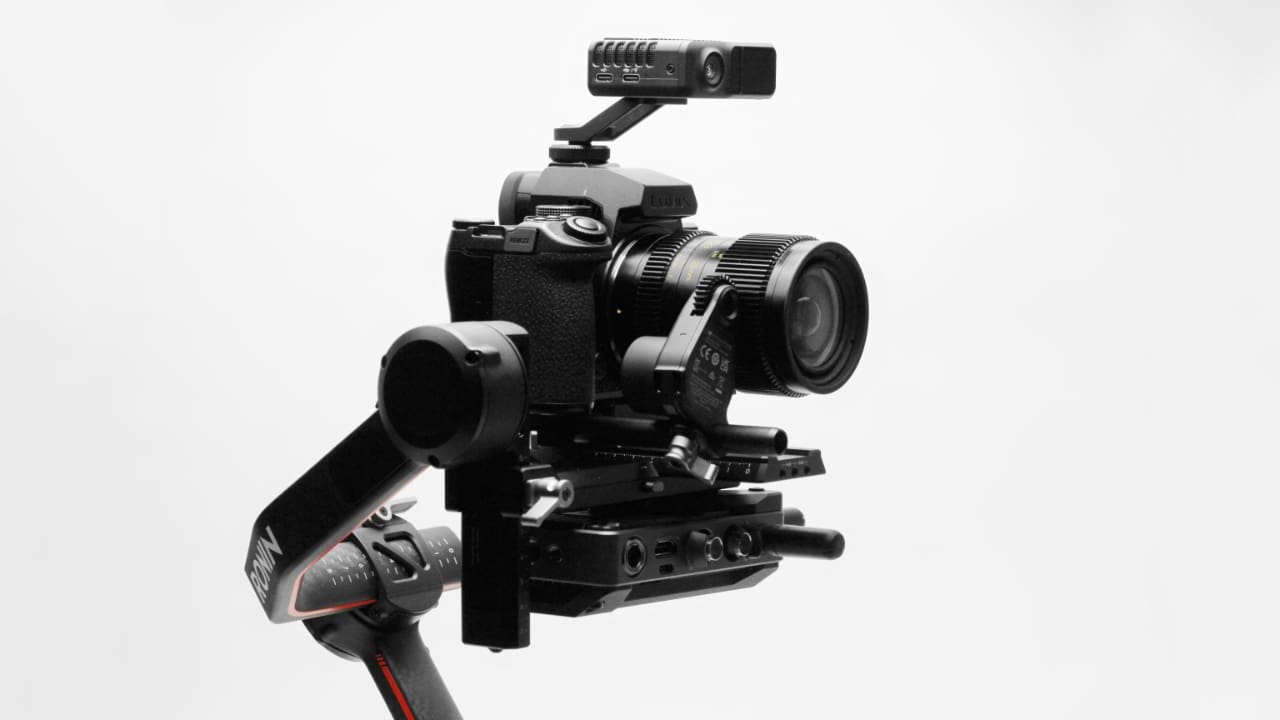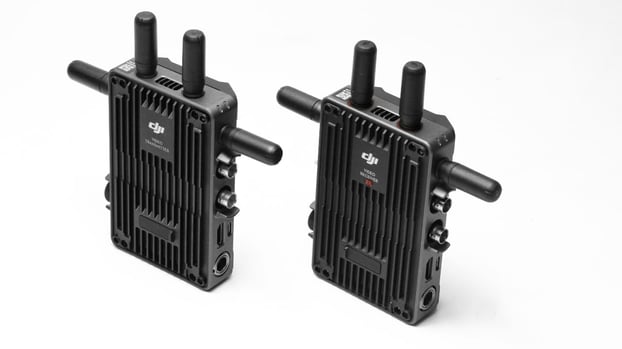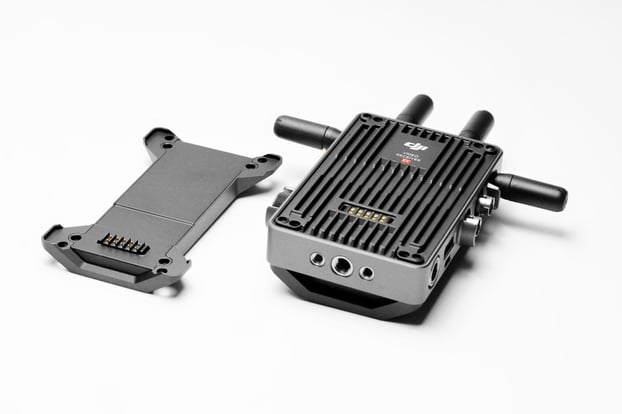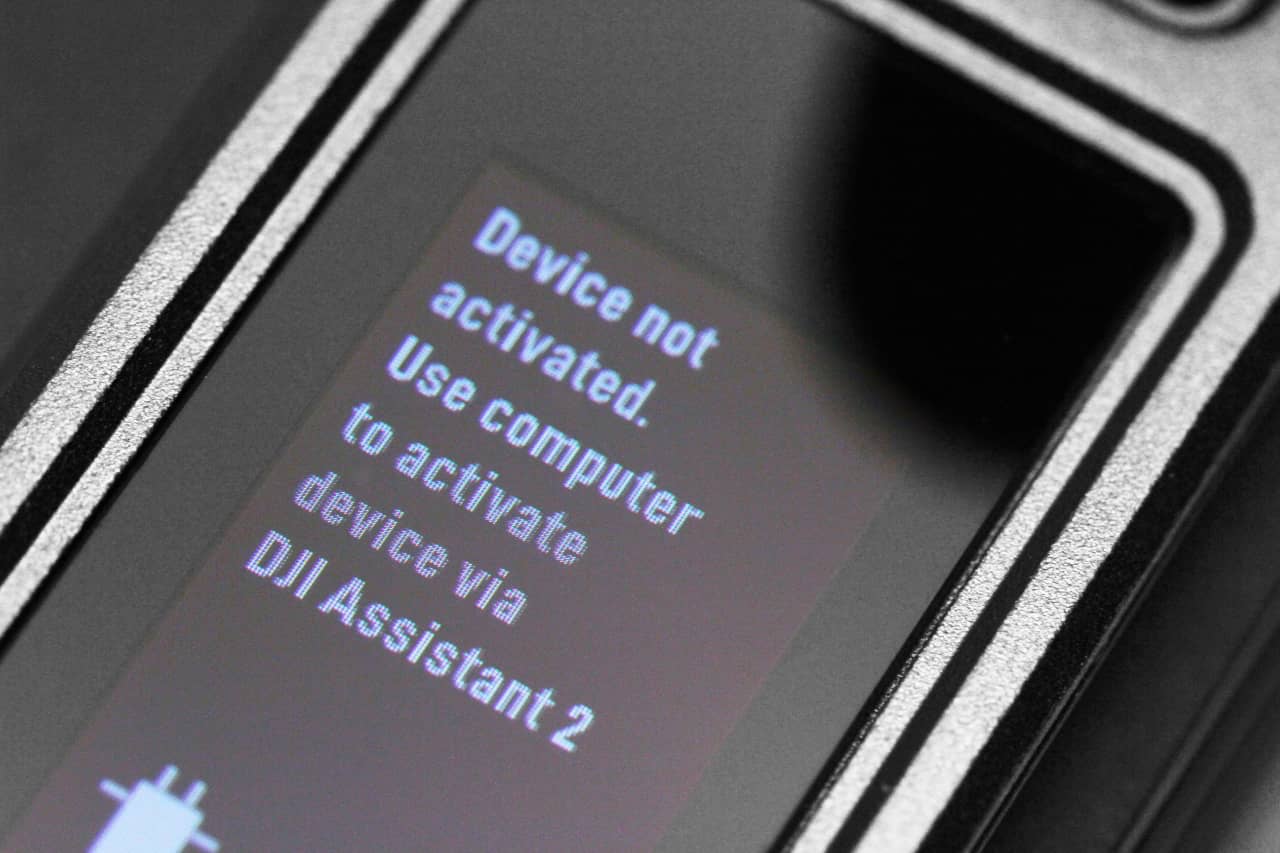
DJI Transmission has evolved from the established DJI aerial video transmission technology to deliver an integrated solution that combines a video receiver, monitor, controller, and recorder. Phil Rhodes puts it through its paces.
At a glance, DJI Transmission looks like a competitor to remote video links from companies like Accsoon or Hollyland. Considered as a straightforward video link, it keeps latency down to about 70ms in the best case, which is decent for something not using the frequency-division multiplexing technology fundamental to near-zero-latency transmitters. DJI also advertises a truly prodigious range for the system – up to 6km, with the usual big fat asterisk for radio technology – but that’s not what makes it interesting.
We’re talking about this because DJI recently released the receiver module for its Transmission suite of products. The standalone receiver facilitates displaying the system’s images on a conventional SDI or HDMI display. Back when we looked at the RS3 Pro gimbal, we looked only briefly at the high-brightness monitor, the LIDAR, and all of the associated remote control functionality. At that time, the receiver built into the monitor was the only receiver available. The new receiver module, therefore, creates flexibility by making it possible to put the picture up on any display we like.

As so often, transmitter and receiver are almost identical to look at. The RX has the red square on it
A full ecosystem
Good as all that is, the full potential of the Transmission system is only realized when it’s deployed as part of DJI’s ecosystem of grip and monitoring equipment, which we’ll look into a bit more here. Monitors from other manufacturers are increasingly able to display status information (not necessarily requiring it to be burned into the image), and there’s integration with focus controllers on some SmallHD displays. So far, though, nothing has worked quite like DJI’s setup. The system relies on the fact that most digital radio communications devices are actually transceivers – the device that’s nominally the receiver will generally send signals to the transmitter if only to report bandwidth issues or coordinate frequency hopping. DJI’s system goes quite a bit further, sending focus control, pan-and-tilt commands, and focus data back and forth.
Technologically, this is not rocket science, but it’s a triumph of integration. Watching the depth map from the time-of-flight sensor is like discovering what’s been missing from focus pulling all these years. It only goes a reasonably short distance, but it’s effective. Throw an RS3 Pro gimbal into the mix, and the combination of gear creates something a bit like a Ronin 4D with an interchangeable camera and lenses, as well as the ability to have people to pull focus and to operate, using wheels or just the monitor’s internal gyroscope.
The standalone Transmission receiver itself is, as so often with these things, almost indistinguishable from the transmitter. The same interchangeable plates support the company’s battery system and Sony NP-F series batteries, and the system operates in both the 2.4 and 5Ghz bands with four antennae. This sort of diversity receiver can be implemented in a number of ways, and details matter, although the company claim of a 20,000-foot range seems likely to be achieved mainly when the camera is flying on a drone, and there’s a direct line of sight to the receiver. Deployed as a standard camera-to-monitor transmitter-receiver pair, the system seems perhaps a bit more robust than competing devices. However, it’s very hard to be objective about radio gear. It’ll certainly go through a couple of walls, and there’s little of the pairing drama seen on other systems.

Interchangeable battery plates work with either DJI's own design, or Sony-style NP-F series batteries
Setting it all up
Or, at least, there’s little drama once we’ve switched the receiver on, and this is where we must swerve through what seems to be an unnecessary chicane. New users make a language selection – fine – and then see a demand for online activation. This is unnecessary on the RS3 Pro gimbal, and it’s more unnecessary on the new receiver. It demands the “DJI Assistant 2” application be used and won’t start otherwise. Don’t be fooled by the first Google result for “DJI Assistant 2 (Updates discontinued)”; check the manual and realize that what we’re looking for is “DJI Assistant 2 (Ronin).”

Post-installation, we must agree to legal jargon, create an account (but of course), and log in, which is awkward because the captcha reads “load verification code failed.” Working around that, we log in and connect the device. At some considerable length, it updates its firmware with a progress bar that restarts several times. Then, the device can be registered and will consent to be switched on. DJI is not the worst or only offender, but this stuff has to stop. There is no reason this device needs an online registration. Presumably (hopefully, probably), this will all only happen once, but the new-user experience is made grim by it.
Similar procedures attend other things in the DJI ecosystem, except those things that require a different edition of DJI Assistant 2, or those things that update via a cellphone app, or things like the focus motor, which updates via being plugged into the transmitter. These procedures are sufficiently fiddly that anyone looking to assemble the full kit should book a long afternoon with a large pot of coffee to do all the integration.
An unprecedented system
Once it’s been beaten into shape, however, the Transmission ecosystem facilitates a lot of things. The radio link is better than average; the feature set is vast, and, in general, the ability to bring this sort of sophistication to any camera and most mechanical lenses is unprecedented. It’s sturdily made and highly compatible, and the new receiver module does nothing but expand its compatibility.
The Transmission receiver seems likely to sell for around $1699, excluding tax; the standalone transmitter is $1099, with the standard combo coming in at $2499. That's a lot compared to an Accsoon CineEye 2S; DJI’s transmitter-receiver pair pushes four times the money. Compared to a Teradek, it’s more reasonable, though Teradek has its latency benefits. It’s the Transmission system’s feature set that will inform any evaluation of value. The rest of the gear shown here represents a package worth thousands (the Cooke SP3, of which more soon, notwithstanding).
The big caveat, specifically with the picture link itself, is latency. Still, for anyone building out the full ecosystem of DJI devices, it does things you can’t easily get elsewhere. The sheer feature set raises the subversive reality that nothing is stopping all the big players from collaborating to create this kind of interoperability for any collection of high-end cinema gear, but it’s taken a long time to make lens metadata sometimes mainly work. So, this sort of integration seems likely to remain most accessible to companies like DJI, who build the whole suite of equipment. Presumably, there’ll be more parts of that ecosystem to look at in the future.

A detail of the focus distance display created by the LIDAR rangefinder. Not a feature of the receiver itself but a big part of the ecosystem
Tags: Production


Comments